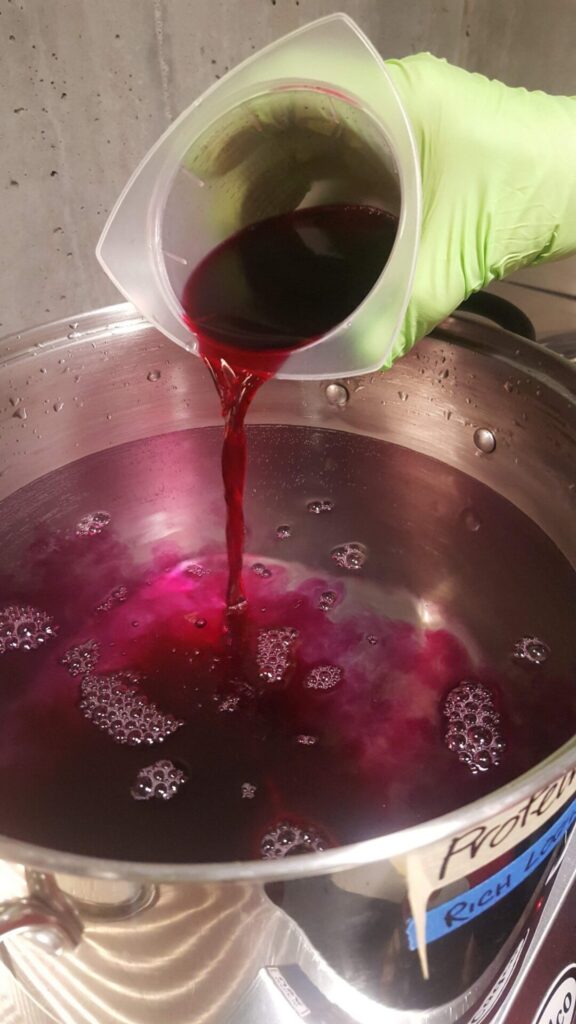
25 grams of our liquid logwood will dye approximately 250 grams of fiber to a dark purple shade! Logwood by itself is not particularly lightfast, so keep from bright sunlight. Its lightfastness increases and the color darkens to a near black with added iron. In addition, if your water is neutral or acidic, a little soda ash in the dye bath will enrich the purple tone on wool and silk fibers.
MATERIALS
CLICK HERE for our post on setting up your dye studio.
- Liquid Logwood
- A Dye Pot : Stainless Steel
- Heat Source : Stove Top, Hot Plate, Fire outside….
- Whisk
- Tongs
- Gloves
- Thermometer
- Bucket
- Your Fiber : Natural fibers like cotton , hemp , silk or wool . We have a bunch of fabric for you to work with HERE.
PROCEDURE
- Scour your fabric according to its type.
- Mordant your fabric according to its type.
- Calculating the amount of dye that you need can be done by first weighing the material that you want to dye. The material must be dry when you weigh it. This measurement is known as the weight of fiber or WOF. The amount of dye that you need is then calculated as a percentage of the WOF.
- Make your dye bath with the percentage you determine for the shade you are looking for!
- Make sure you soak your fabric for at least one hour before entering into your dye bath. This helps open the fibers up to suck up the dye evenly.
- Begin heating the pot until it reaches 90°F/30°C. Rotate the fibers gently to avoid felting or tangles. Hold at this temperature for 30 minutes.
- Bring the heat up to 180°F/80°C and hold for 30-45 minutes. The dyebath should look very light or nearly clear (exhausted).
- You may let the fibers cool in the dyebath until they are safe to handle.
- If the dyebath still contains a lot of dye, add ¼ cup (50 ml) white (distilled) vinegar and continue a low simmer for another 30 minutes, then let cool overnight in the dyebath. Rinse in cool water.
WASH CARE
It is always best to use pH neutral soaps for your natural dyes. This means ecological brands that don’t contain optical brighteners or any sort of Once you are finished with your project you will want to wash ( in your washing machine – separate from other garments ) on a hot cycle to bleed out the excess dye. After this initial washing, it is recommended to hand wash or wash on a delicate cycle to preserve the longevity of your pieces.

